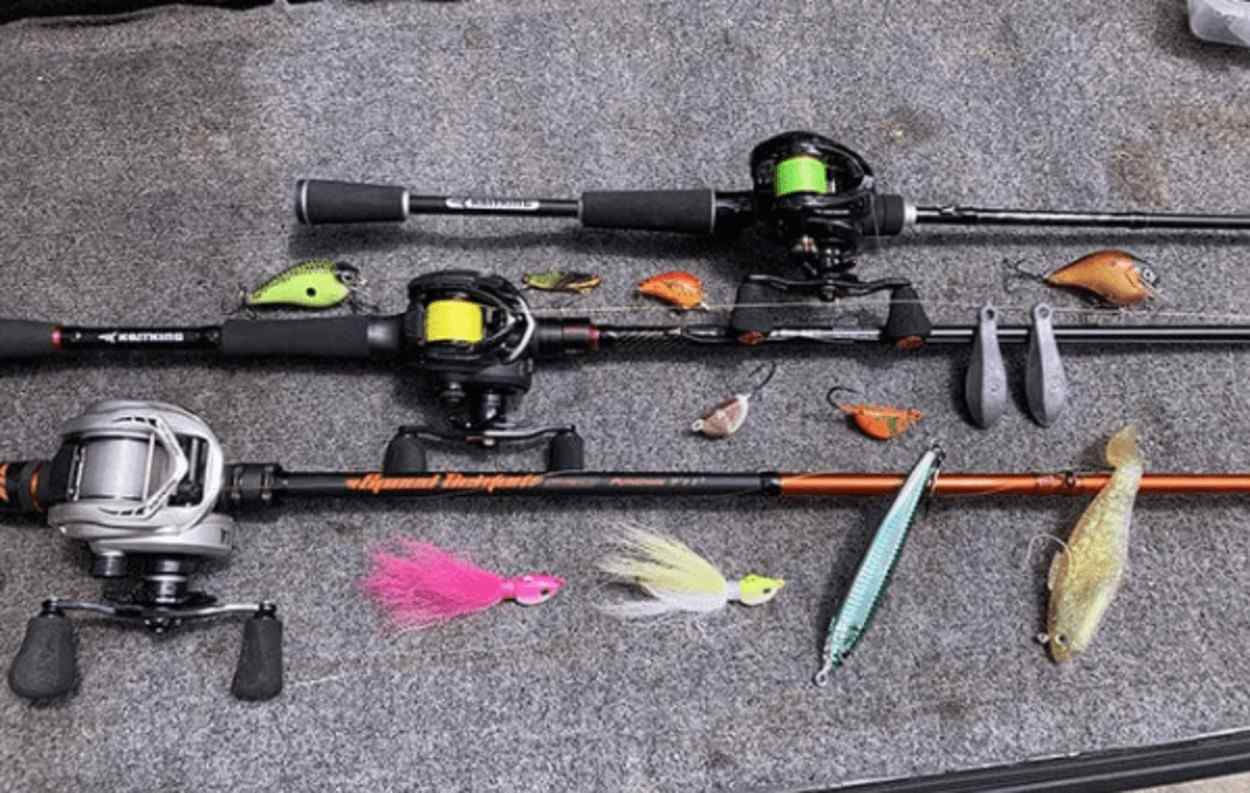In the angling universe, terms and implements can sometimes spell confusion—especially when they sound alike! One such ever-so-common confusion is the conflict of “baitcaster rod” and “bait caster rod.” Although the terms point toward the same style of fishing rod and reel combination, their contrasting usage and meaning need clarification for one who is putting together the perfect rig in his tackle box.
This blog seeks to clear any confusion on these terms, consider the design and working of the baitcaster set, and provide you with the choice of a fishing rod and reel system for pinpoint casting and better performance.
What Is a Baitcaster Rod?
The baitcasting rod—a term that may be written as one word—is a variable fishing rod type that can be paired with baitcasting reels.
Such rods can cast heavier lures with extreme accuracy; they target the bass, pike, and musky species. Features commonly found on baitcaster rods include:
- Trigger grip handles to encourage a better hold during casting.
- Guides placed on top of the rod , matching the positioning of the reel.
- A firmer backbone that offers strength and power for heavier lines and lures.
Known for casting long distances with precision, these rods have always been a favourite for casting-controlled applications among professional anglers.
What Is a Bait Caster Rod?
Herein lies the point of confusion. The term “bait caster rod” with a space in between is, in essence, a variant of spelling or phrasing.
Most anglers and even some manufacturers would interchange the two terms in conversation. However:
- Baitcaster rod is more accepted and more commonly used in product listings, brand communications, and fishing circles.
- A bait caster rod is simply a less common variant of spelling, but it does not imply a different product from its counterpart.
In a nutshell, there is no distinction in the product itself- it is simply a matter of terminology.
Why the Confusion Exists
Most of the confusion stems from the Internet and how these two names are termed and marketed. Suppose an inexperienced baitcasting fisherman Googles “bait caster rod” thinking it is a different type of rod; he might be seriously misled since both terms refer to a fishing rod for baitcasting reels.
Such inconsistencies in terminology certainly affect online search indices. Therefore, it becomes necessary to keep consistent terminology when researching or shopping for an ideal rod and reel set-up.
Understanding the Baitcasting System
Understanding the whole baitcasting system helps one to better appreciate what a baitcaster rod can do:
- Baitcasting Reel: Casts with a revolving spool mounted on top of the rod; normally, the caster has to use thumb control throughout the cast. It is a reel meant to combine strength and precision, known for its learning curve.
- Fishing Rod: The baitcasting rod balances the lure’s weight and that of the fish and, working with the reel, provides sufficient leverage and power.
Combined, the fishing rod and reel belong to those situations in which controls, sensitivity, and accuracy are needed the most, mostly on freshwater.
When to Use a Baitcaster Rod
The baitcasting rod is ideal for any angler looking to:
- The angler who casts heavy lures, such as jigs, spinnerbaits, or crankbaits.
- Those who fish in heavy cover, like weeds, brush, or submerged structures.
- Those trying to increase casting distances and accuracy with heavy lines.
- Those trying for the larger aggressive species where torque counts.
If you are coming from spinning setups and want to put more control in your casting, then the baitcaster rod is something to consider.
Choosing the Right Baitcaster Fishing Rod
In buying a baitcaster rod, consider the following:
- Rod Length: The longer rods of about 7 feet or more allow for more distance in casting; shorter rods offer more accuracy in tight spots.
- Power & Action: For fishing bass or pike, one should choose medium-heavy power with fast action.
- Material: One thing to know is that graphite rods offer sensitivity while fibreglass ones provide strength. Most anglers prefer a composite because it gives good all-around performance.
And the reel, too. Pairing the right rod and reel will give you the best result. Ensure that the reels have a smooth drag system, comfortable handles, and magnetic or centrifugal braking systems to lessen backlashes.
Wrapping Up
There is much talk about whether the term should be “baitcaster rod” or “bait caster rod,” but truly, it rests solely on a matter of terminology. Both names identify one powerful fishing setup that is versatile in giving authority to the fishermen to maximise the end results. Whether bass fishing in a landlocked lake or casting under a bridge in an urban canal, a good knowledge of how the baitcasting rig works will, for sure, hone your fishing skills.
The next time you get out and look for your fishing rod and reel, let the words remain a non-factor. Let the one that complements your style of fishing be the one you choose.
